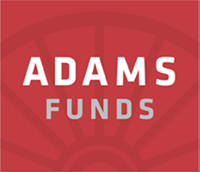While often viewed as a defensive play for investors during times of market turmoil, Health Care has been the best performing sector for Adams Diversified Equity Fund for the past two years, underscoring the growing appeal of the industry regardless of market conditions. Technological advancements and evolving delivery models – not to mention attractive demographics thanks to an aging baby boomer population – should continue to drive excitement in the space for the foreseeable future. Steve Crain, Adams Funds health care analyst, discusses his views on trends and advances in the health care industry.
New drug development and ongoing innovation support future growth prospects.

One of the most notable breakthroughs this year was the advances in Gilead Sciences’ (GILD) treatments for Hepatitis C (HCV). The company has seen a lot of success already from its Sovaldi treatment, which generated $10.2 billion in sales in 2014, and then the company released Harvoni in October of last year. More recently, in September, the company disclosed successful outcomes from its late-stage trials for a combination therapy that treats all six HCV genotypes. The new cocktail treatment, based on the trials, demonstrated that it can essentially cure patients suffering from HCV within eight to 12 weeks.
We also favor Novartis (NVS), a world class R&D company with a high-quality drug pipeline. NVS recently launched successful new products for treating heart failure and psoriasis, and will also be a leading player in the biosimilar market. A goal of the industry has been to find new untreated or poorly treated indications and improve upon the outcomes, safety and dosing. Alzheimer’s Disease, multiple sclerosis, and immune-oncology (the study of interactions between the immune system and cancer cells) are just a few of the exciting R&D focus areas with new products on the horizon.
The pricing debate is an interesting one. The economic benefit, and not just the price of a drug, is an important consideration. While the cost of a particular drug may be high, the value proposition can be quite favorable.
For instance, the cost to treat patients early is usually lower than the cost to treat patients after a disease has progressed. Additionally, the cost of drug development has gone up in recent years. The Federal Drug Administration requires longer and larger trials to ensure safety, with drug companies absorbing the higher costs as a result. The ensuing higher development costs have translated into higher prices for consumers. The U.S. also pays more for drugs because we essentially subsidize the cost of drugs for the rest of the world. In the emerging markets, most drugs are given away for free.
I’d just note that recent political posturing from the presidential candidates raised questions about the government’s role in drug costs. However, the government currently has limited ability to actually regulate pharmaceutical pricing.
M&A activity has been strong and widespread throughout the sector, and we’ve found that there are some different drivers depending on the area within health care being explored. Among the pharmaceutical companies and biotechs, the primary catalysts behind the activity are a desire to buy innovation and growth as well as to build scale and leverage fixed costs. Innovation frequently happens at smaller firms, who then become attractive targets for larger companies with cash or access to low-cost capital. The industry has also established a good track record of accretive deals, making it more attractive.
You’ve also seen consolidation within managed care, as Anthem and Cigna, Aetna and Humana, and Centene and Health Net each paired off recently. These mergers reflect efforts to leverage scale in light of the ACA regulations, with the added benefit of end-market diversification to access both public-exchange segments of the population as well as Medicare and Medicaid patients.
